Fascinating Owls !
Today and tomorrow we are going to spend some time looking at owls in all their fascinating forms. Do you like owls? Do you find them beautiful? Regal? Wise? Mysterious? Soft and cuddly? Or perhaps, like me, a bit scary and dangerous?
We all know they are hard to spot during the day, and are mainly nocturnal, coming out at night to hunt for small rodents, mice, insects, small birds, etc. But did you know that a few species are also specially adapted to hunt for fish?
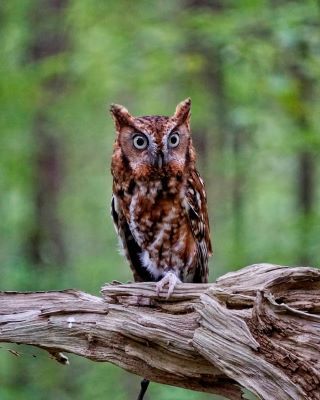
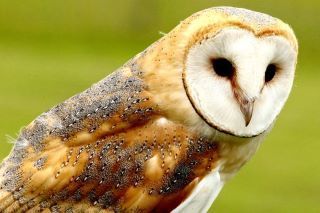
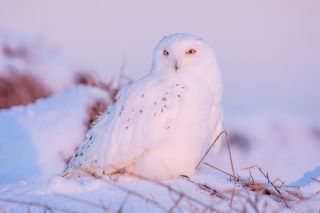
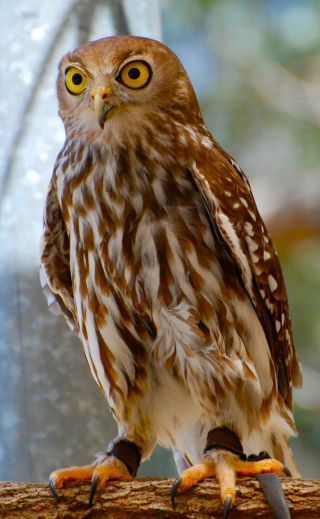
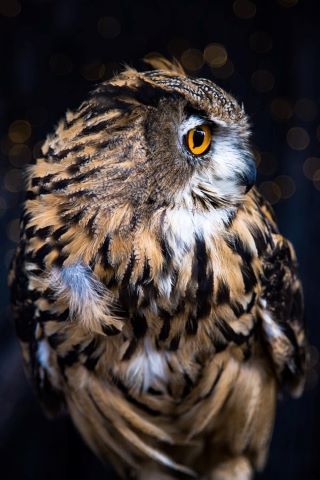
Some interesting facts about owls
There are about 200 species of owls found all around the world, except Antarctica. They come in all shapes and sizes, from about 15 cms (6 inches) tall to up to 80 cms (32 inches) tall. They all come from the Order Strigiformes, then Owls are divided into two families: the true (or typical) owl family, Strigidae, and the barn-owl family, Tytonidae, which has the heart-shaped face we all know so well.
Australia has eleven species of owl, found throughout the country. Contrary to popular belief, the Tawny Frogmouth that is quite common in our suburbs isn’t actually an owl. It is native to the Australian Frogmouth genus, but it is related to the owl. Don’t they blend well in the tree?
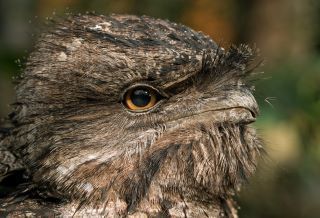
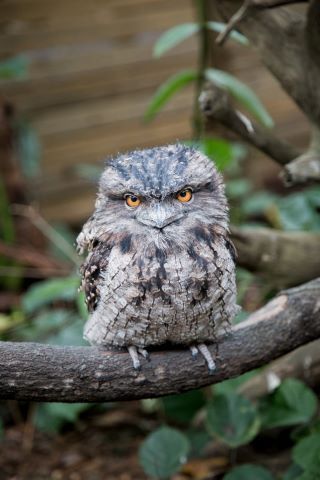
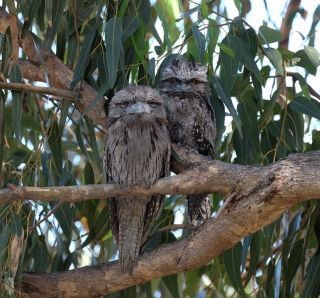
Instead of round eyeballs, owls have "eye tubes" that go right back into their skulls — which means their eyes are fixed in place, so they have to turn their heads to see in different directions. However, they can turn their necks 135 degrees in either direction, which gives them 270 degrees of total viewing range! Not quite the full 360 degrees, but pretty close!
The size of their eyes helps them see in the dark, but they also have excellent sight, almost like binoculars, so they can spot prey from metres away. Up close, their vision is blurry, and they depend on small, hair-like feathers on their beaks and feet to feel their food.
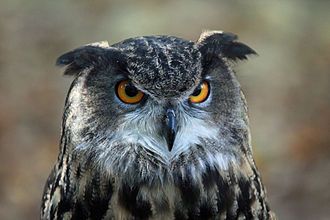
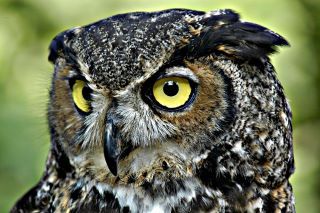
They have huge talons (claws) which allow them to grab and hold tight to their prey. Their beak is specially adapted to help in eating their prey, even parts that are not digestible, like bones or fur. The owl’s digestive tract compacts those pieces into a pellet, which the owl later regurgitates as waste.
Unlike most birds, owls are virtually soundless when they fly. They have large wings relative to their body mass, which lets them fly by mostly gliding rather than by flapping. Also, comb-like serrations on the edge of the wing feathers break up the turbulent air into smaller currents, which also reduces sound. Soft velvety down on the wing further muffles any noise.
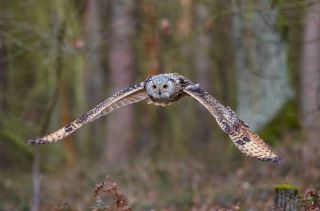
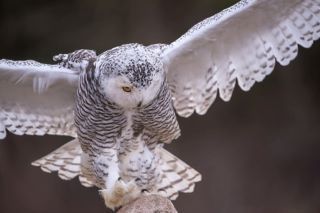
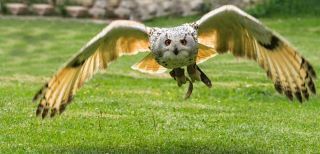
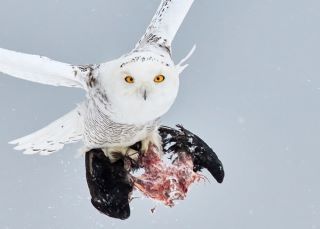
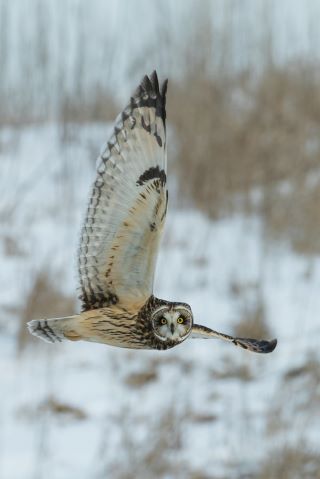
Owls have super-sonic hearing and are capable of hearing prey under moving leaves, plants, dirt, and even snow. Owls can have either internal or external ears, both of which are usually asymmetrical. This uneven positioning on their heads allows them to determine the direction of the sound more accurately by interpreting the sound waves differently.
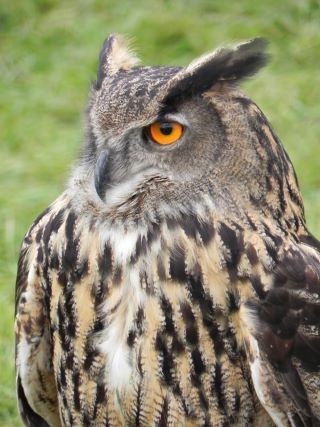
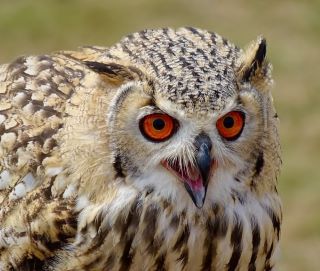
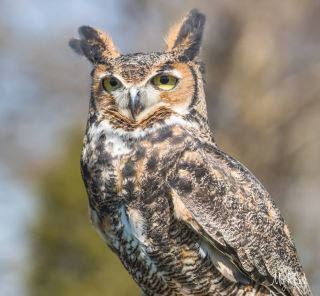
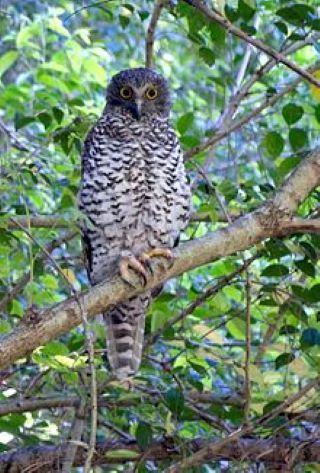
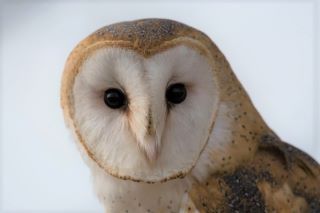
Some owl species mate for life, such as the barn owl, but others do not, changing partners every breeding season. Owls lay eggs that are generally round in shape, and almost white in colour. The number ranges from a just a few to up to a dozen, depending on species and the particular season; for most, three or four is the usual number. The little owl chicks are called Owlets.
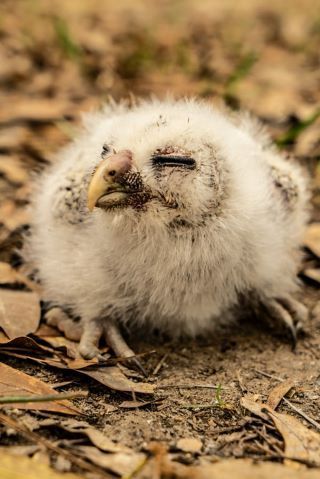
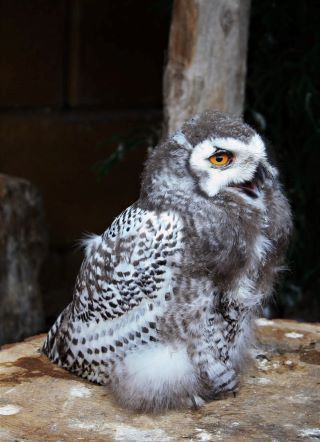
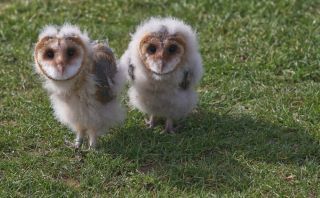
The lifespan of the owl varies greatly, depending on the species. The Barn Owl generally only lives for about four years while the Great-Horned Owl can live for up to thirteen years. Some longer-lived owls can go upwards of 20 years. Their lifespan is also usually longer in captivity, where they are away from predators and man-made hazards.
Most owls are masters of disguise. They sleep through the day, but the colours and markings on their feathers make them almost impossible to spot amongst the tree foliage and bark.
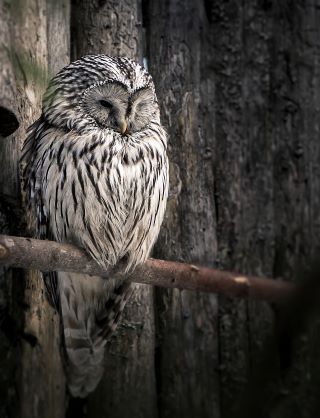
Most owls live in trees, but not all! The Burrowing Owl of North and South America does exactly that, burrowing into grasslands, agricultural areas, deserts, or any other open dry area with low vegetation. They both nest and roost in burrows, such as those excavated by prairie dogs.
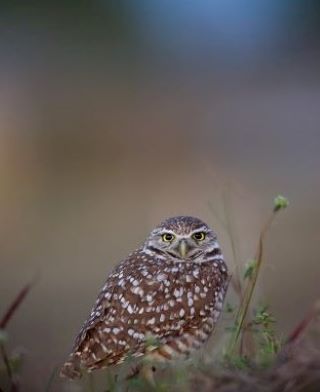
Fun fact: A group of owls, (whilst rarely seen), is called "a parliament", because they are thought to be wise......... Figure that one out!!
In August 2018, Jane wrote about Bath's Parliament of Owls which was a major public art sculpture trail featuring over 80 individually decorated, super-sized owl sculptures displayed across the World Heritage city of Bath and surrounding region from June - September 2018.
All 82 owls were displayed on the Bath Recreation Ground for a weekend and then the colourful sculptures were auctioned for charity. The auction raised £140,000 and the owls then flew off to their new homes across the UK, as well as to nests in Hungary, France and Canada!
Tomorrow we will look at other characteristics, and some of the most beautiful owls across the world.
